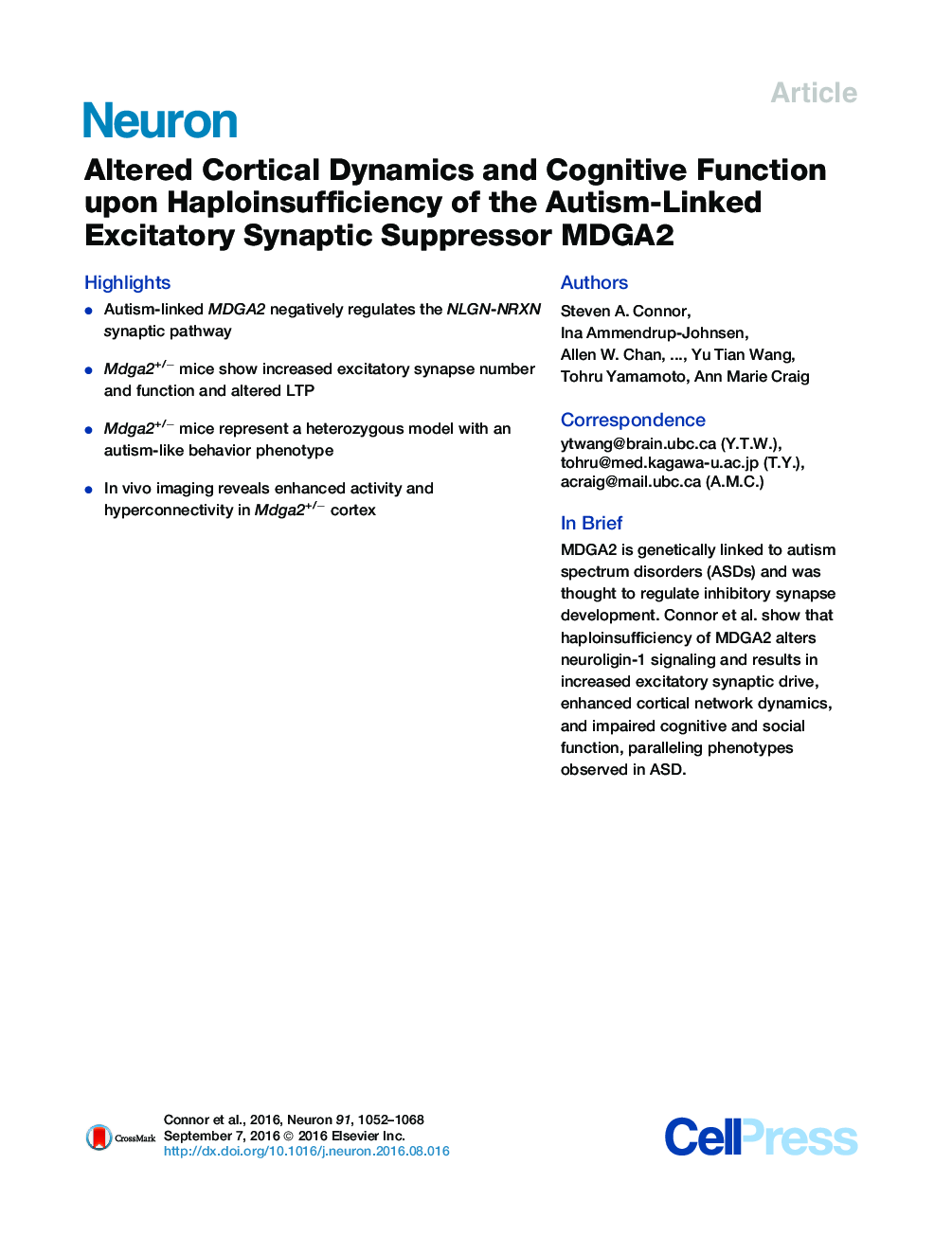| Article ID | Journal | Published Year | Pages | File Type |
|---|---|---|---|---|
| 4320610 | Neuron | 2016 | 17 Pages |
•Autism-linked MDGA2 negatively regulates the NLGN-NRXN synaptic pathway•Mdga2+/− mice show increased excitatory synapse number and function and altered LTP•Mdga2+/− mice represent a heterozygous model with an autism-like behavior phenotype•In vivo imaging reveals enhanced activity and hyperconnectivity in Mdga2+/− cortex
SummaryMutations in a synaptic organizing pathway contribute to autism. Autism-associated mutations in MDGA2 (MAM domain containing glycosylphosphatidylinositol anchor 2) are thought to reduce excitatory/inhibitory transmission. However, we show that mutation of Mdga2 elevates excitatory transmission, and that MDGA2 blocks neuroligin-1 interaction with neurexins and suppresses excitatory synapse development. Mdga2+/− mice, modeling autism mutations, demonstrated increased asymmetric synapse density, mEPSC frequency and amplitude, and altered LTP, with no change in measures of inhibitory synapses. Behavioral assays revealed an autism-like phenotype including stereotypy, aberrant social interactions, and impaired memory. In vivo voltage-sensitive dye imaging, facilitating comparison with fMRI studies in autism, revealed widespread increases in cortical spontaneous activity and intracortical functional connectivity. These results suggest that mutations in MDGA2 contribute to altered cortical processing through the dual disadvantages of elevated excitation and hyperconnectivity, and indicate that perturbations of the NRXN-NLGN pathway in either direction from the norm increase risk for autism.
